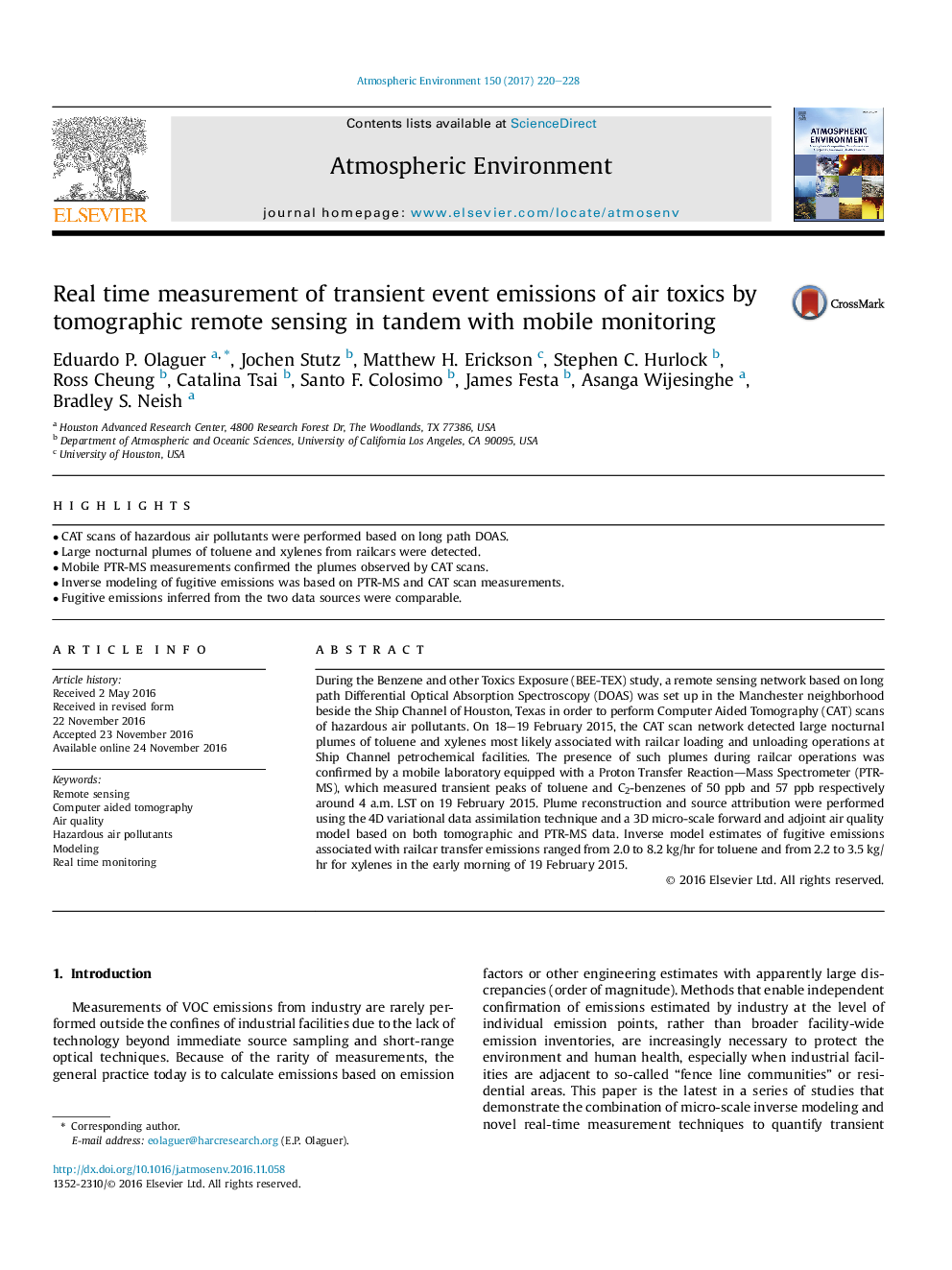| Article ID | Journal | Published Year | Pages | File Type |
|---|---|---|---|---|
| 5753459 | Atmospheric Environment | 2017 | 9 Pages |
â¢CAT scans of hazardous air pollutants were performed based on long path DOAS.â¢Large nocturnal plumes of toluene and xylenes from railcars were detected.â¢Mobile PTR-MS measurements confirmed the plumes observed by CAT scans.â¢Inverse modeling of fugitive emissions was based on PTR-MS and CAT scan measurements.â¢Fugitive emissions inferred from the two data sources were comparable.
During the Benzene and other Toxics Exposure (BEE-TEX) study, a remote sensing network based on long path Differential Optical Absorption Spectroscopy (DOAS) was set up in the Manchester neighborhood beside the Ship Channel of Houston, Texas in order to perform Computer Aided Tomography (CAT) scans of hazardous air pollutants. On 18-19 February 2015, the CAT scan network detected large nocturnal plumes of toluene and xylenes most likely associated with railcar loading and unloading operations at Ship Channel petrochemical facilities. The presence of such plumes during railcar operations was confirmed by a mobile laboratory equipped with a Proton Transfer Reaction-Mass Spectrometer (PTR-MS), which measured transient peaks of toluene and C2-benzenes of 50Â ppb and 57Â ppb respectively around 4 a.m. LST on 19 February 2015. Plume reconstruction and source attribution were performed using the 4D variational data assimilation technique and a 3D micro-scale forward and adjoint air quality model based on both tomographic and PTR-MS data. Inverse model estimates of fugitive emissions associated with railcar transfer emissions ranged from 2.0 to 8.2Â kg/hr for toluene and from 2.2 to 3.5Â kg/hr for xylenes in the early morning of 19 February 2015.
